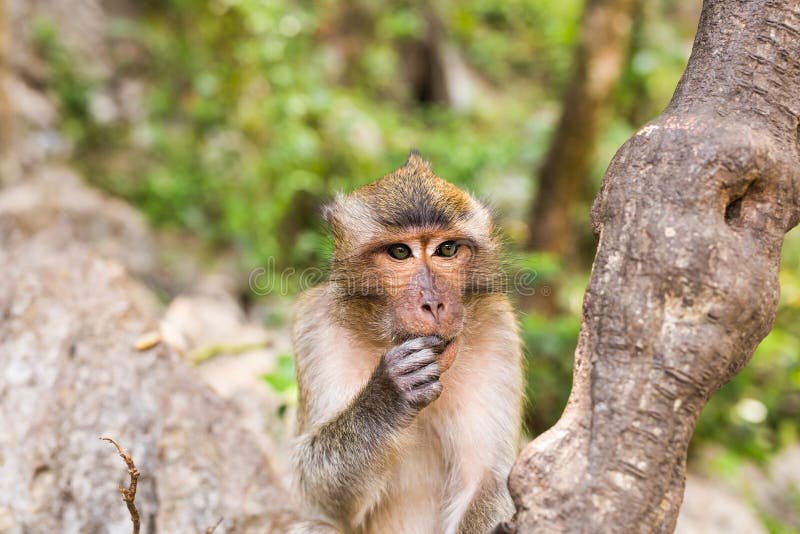
Monkeys are fascinating creatures, often portrayed in movies and stories as playful and mischievous. But remember, they’re still wild animals with their own behaviors and instincts. It’s like stumbling upon a toddler in a candy store who just discovered a lollipop—cute but unpredictable. Respecting their space and knowing how to handle the encounter will keep you safe and help preserve the monkey’s natural behavior. Let’s dive into some friendly and practical tips for handling this unique situation.
Stay Calm and Observe
The first thing to remember is to stay calm. It’s natural for your heart to race when you see a monkey up close, but panicking won’t help. Stand still and take a moment to observe the monkey’s behavior. Are they alone or with a group? Are they foraging for food or just lounging around?
Understanding their behavior can give you clues about how to proceed. For instance, if the monkey appears relaxed and is just munching on some leaves, you can enjoy the moment from a distance. But if they’re shrieking or showing their teeth, it might be best to quietly back away. Trust your instincts—if something feels off, it’s better to err on the side of caution.
Here’s a tip: avoid making direct eye contact. In the animal kingdom, staring can be seen as a threat, and you definitely don’t want to provoke a wild monkey. Instead, let your gaze drift to the side while keeping the monkey in your peripheral vision.
Do Not Feed the Monkeys
You might feel tempted to share a snack with your new furry friend, but this is a big no-no. Feeding wild monkeys can lead to all sorts of problems for both you and the animals. Here’s why it matters:
- Habituation: When monkeys get used to human food, they can become dependent on it. This may lead them to approach humans more frequently, creating dangerous situations.
- Health Risks: Human food isn’t good for monkeys. It can lead to health issues, and you wouldn’t want to be the cause of their troubles.
- Increased Aggression: Monkeys that associate humans with food may become aggressive toward them, thinking they can get more treats.
If you find yourself in this scenario, you can enjoy watching them forage naturally. Observing their behaviors—how they find food, groom each other, or interact—can be just as rewarding as feeding them.
Make Your Presence Known
If a monkey gets too close for comfort, it’s important to let it know you’re there without startling it. One effective way to do this is by speaking softly. A simple “Hey there” or “Look at you!” can show the monkey you’re not a threat.
Moving slowly while speaking can help. Think of it like gently nudging a shy child to come out of their shell. You’re reassuring them that you mean no harm. Avoid sudden movements, as they can frighten the monkey, leading to unpredictable behavior.
If the monkey approaches you more than you’d like, back away slowly while continuing to talk softly. This signals to the monkey that you’re giving it space and are not there to challenge it.
Keep Your Belongings Secure
Monkeys are known for their curious and mischievous nature. If they see something shiny or interesting, like your water bottle or backpack, they might try to snatch it away. To prevent this:
- Keep Your Distance: Store your belongings close and keep an eye on them. Standing too close while being distracted by the monkey might give it the opportunity to grab something.
- Close Your Bags: Make sure your bags are zipped up to deter any curious paws. Leaving snacks or shiny items out simply invites trouble.
- Use Non-Attractive Items: If you’re in an area known for monkey encounters, consider leaving anything flashy or edible at home—or in your locked car.
Remember, this is their space, and your belongings can be seen as new toys to them.
Know When to Leave
Sometimes, the best thing to do when encountering a monkey is to quietly move away. If a monkey is acting aggressively or seems overly interested in you and your stuff, it might be time to leave the area. You can think of it as gracefully exiting a party where the vibe has suddenly turned awkward.
If you notice any signs of aggression—like vocalizations, showing teeth, or puffing up—a quick exit is the best way to keep both you and the monkey safe. Always trust your gut; if you feel uncomfortable, it’s okay to step back.
Keep in mind that the monkey’s territory is vast, and there are plenty of other places to explore without becoming a target.
Educate Yourself Beforehand
Before heading out on your adventures, take some time to learn about the local wildlife—particularly monkeys. Different species have different behaviors. For instance, while some monkeys may be playful, others can be more territorial.
Research where you are going:
- Know the Species: Understanding the type of monkey you’re likely to encounter can inform you about their behavior and how to interact safely.
- Check Local Regulations: Some areas may have guidelines or restrictions for interacting with wildlife. Always follow these to avoid putting yourself or the animals at risk.
- Join Group Tours: If you’re unsure, consider joining guided tours with wildlife experts who can provide valuable insights and keep you safe.
Going in with knowledge can make you feel more confident and prepared for any unexpected encounters.
Final Thoughts
Encountering a monkey in the wild can be a thrilling experience, but it’s important to treat it with respect and caution. By staying calm, observing behavior, and securing your belongings, you can enjoy the moment while ensuring everyone’s safety. Remember, these animals live by their own rules in their own worlds, and part of our adventure is learning to coexist peacefully.
So next time you’re out in nature, keep your eyes peeled, your snacks tucked away, and enjoy the beauty of wildlife without stepping on anyone’s toes—especially those of a curious monkey!

